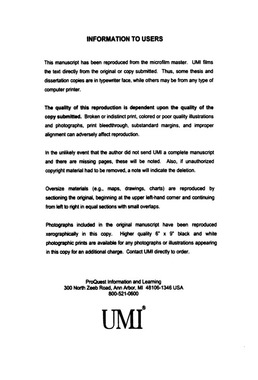| dc.contributor.advisor | Cook, Paul F., | en_US |
| dc.contributor.author | Liu, Dali. | en_US |
| dc.date.accessioned | 2013-08-16T12:18:24Z | |
| dc.date.available | 2013-08-16T12:18:24Z | |
| dc.date.issued | 2001 | en_US |
| dc.identifier.uri | https://hdl.handle.net/11244/375 | |
| dc.description.abstract | Based on homology search results and the three-dimensional structures of malic enzymes, 12 highly conserved ionizable residues were selected as potential general acid/base in the malic enzyme reaction. Site-directed mutagenesis studies were carried out to eliminate the potential catalytic groups on the targeted residues. One lysine (199), and four glutamates (58, 107, 271, 440) were mutated to alanine (alanine scanning), while one tyrosine (126) was mutated to phenylalanine. The alanine and phenylalanine mutant proteins were expressed and purified. The initial velocity studies were carried out on the purified mutant proteins. The K199A mutant enzyme and the Y126F mutant enzyme exhibited decreases in turnover number by 105- and 103-fold, respectively, compared to that of the wild type AsME, the two most significant decreases in enzyme activity observed for the mutant enzymes studied. Therefore, K199 and Y126 were considered viable candidates for a catalytic residue. | en_US |
| dc.description.abstract | Other mutations were thus prepared, changing K199 and Y126 to other residues. In the case of K199, the R mutant enzyme gave only a 10-fold decrease in turnover number compared to that of the WT AsME, while the K199E and K199Q mutant enzymes gave decreases in turnover number of about 104- and 10 5-fold, respectively. The much higher activity of the K199R mutant enzyme compared to K199A supports the assignment of K199 as a proton donor in the malic enzyme reaction. The V/Kmalate pH-rate profile of the K199R mutant enzyme is pH independent over the pH range 8--10, while a pK of 9 is observed for the WT enzyme. These data are also consistent with K199 as general acid, given the higher pK of the R side chain compared to that of K in the malic enzyme reaction. Exchange of tritium from solvent into the methyl group of pyruvate, catalyzed by the WT enzyme, is eliminated in the K199A mutant enzyme, also consistent with the general acid function of K199. Thus, K199 serves as the general acid in the malic enzyme reaction. Partitioning of the oxalacetate intermediate with the K199A mutant enzyme is also consistent with the general acid function of K199, and further suggests that K199 also plays a structural role in the conformational change that must occur in the malic enzyme reaction. In this regard, K199 is in the hinge area in the active site, nestled between two subdomains involved in the conformational change. | en_US |
| dc.description.abstract | The facts that no other ionizable residue can replace the function of Y126, and that the Y126F mutant enzyme is the most active among all mutants made at the 126 position, suggest that Y126F is not a catalytic group but structurally important in the active site area. The pH study and the oxalacetate partitioning results on Y126F are consistent with the idea that Y126 plays only a structural role in the malic enzyme reaction. | en_US |
| dc.description.abstract | Malic enzyme catalyzes the metal-ion dependent oxidative decarboxylation of L-malate with NAD(P)+ as a cofactor. NAD-dependent malic enzyme from Ascaris suum was used in the research of this dissertation to elucidate the catalytic mechanism of the malic enzyme reaction, especially the identities of catalytic groups. | en_US |
| dc.format.extent | xviii, 184 leaves : | en_US |
| dc.subject | Chemistry, Biochemistry. | en_US |
| dc.subject | Malic acid. | en_US |
| dc.subject | Pyruvates. | en_US |
| dc.subject | Decarboxylation. | en_US |
| dc.subject | Malate dehydrogenase. | en_US |
| dc.subject | Mutagenesis. | en_US |
| dc.title | Elucidating the catalytic mechanism of malic enzyme via site-directed mutagenesis studies. | en_US |
| dc.type | Thesis | en_US |
| dc.thesis.degree | Ph.D. | en_US |
| dc.thesis.degreeDiscipline | Department of Chemistry and Biochemistry | en_US |
| dc.note | Adviser: Paul F. Cook. | en_US |
| dc.note | Source: Dissertation Abstracts International, Volume: 62-10, Section: B, page: 4529. | en_US |
| ou.identifier | (UMI)AAI3028803 | en_US |
| ou.group | College of Arts and Sciences::Department of Chemistry and Biochemistry | |
